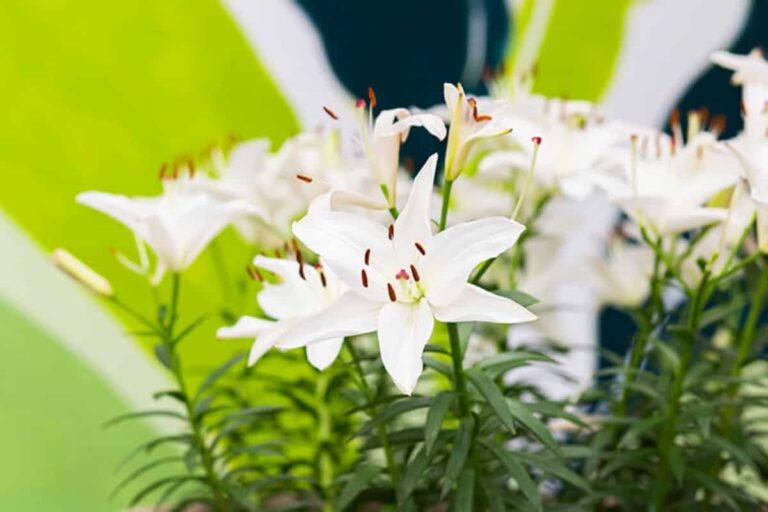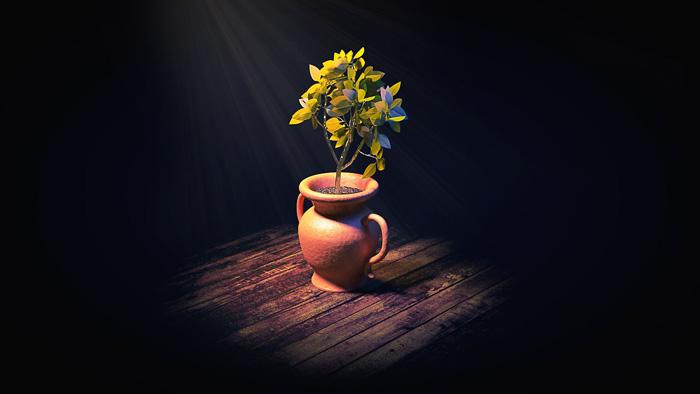Our Helpful Guide to the Best Drought Tolerant Plants
Our recommendations for the best drought tolerant plants are Dwarf Japanese Garden Juniper and Lavender French Provence. When it comes to drought, we wanted to pick tough plants that could handle punishing heat and dry conditions. We also considered how each one would fit in with our landscaping. Read on to see our longer list of plants that can take the heat.
Our Top Picks for the Best Drought Tolerant Plants
[wptb id="8301" not found ]Drought Happens
At any given time, parts of the country experience drought-like conditions. It can range from abnormally dry to extreme drought that may be a short-term occurrence or one for the long haul. Over 1.5 billion people around the world have been affected by drought between 1980 and 2014. Drought costs money and lives. Each year it costs the global economy over $2 billion.
One way to prepare for it is by planting drought tolerant plants in your yard. They can help keep the soil intact when a lack of rain can increase the risk of erosion. Recognizing its impact, scientists and horticulturists have worked to develop plants that can handle dry conditions to offset the economic burden of drought. Fortunately, that includes drought resistant plants for your garden.
What You Need to Know about Drought Tolerant Plants
In areas where drought happens often, you’ll find plants that have evolved strategies for coping. Some are nothing short of amazing. Some involve changes to the structure of plants. Others include taking advantage of the timing to minimize water loss. Whatever the strategy, these plants manage to survive in conditions that would break many other plants.
Native Plants
Good examples of drought tolerant plants exist with native varieties. These plants know what it takes to survive in their native climates. They’ve stood the test of time. They can give you a head start for finding the right drought tolerant plant for you. You’ll likely find different cultivars of native plants that capitalize on some of their outstanding features. The other advantage is maintenance.
Native plants often need less maintenance than exotic varieties. They may cope better with the occasional dry spell that is typical for your area. Some plants like prairie grasses thrive better if you don’t have to water or fertilize them. If you’re looking for a quick solution, you may want to consider plants that are perennials, native to your area, or at least from places with similar conditions.
This video from the Kansas State University Extension discusses the benefits of using native plants in your garden.
How Plants Cope
Plants in dry areas face two challenges. They must minimize water loss and maximize the use of the moisture they find. One way they do this is with smaller leaves or needles. Plants exchange gases and water with openings in their leaves called stomata. The smaller the surface area of the leaves means a reduction in water loss. The needles of cacti are very small leaves.
You’ll find plants with thick fleshy leaves like cacti and succulents that allow them to retain water. Some plants take it one step further with a waxy coating that helps keeps water in the plant. The white fir is one example of this strategy. Prairie plants like big bluestem have deep root systems that can reach down over 10 feet. That keeps them close to water even if it’s hot.
Plants even change their day-to-day rhythms to cope. Some plants, for example, have a different way of undergoing photosynthesis so they can maximize the amount of resources they have and minimize losses. Other plants like cacti take advantage of the cooler evening hours to carry out respiration. During the hot day hours, their stomata remain closed to prevent excess water loss.
Benefits of Drought Tolerant Plants
The clear advantage for gardeners of plants adapted to dry conditions is that they can survive. They have some coping strategy to withstand long periods without precipitation. That’s one cost-saving factor. The other one lies with maintenance. A drought tolerant plant won’t need extra watering during dry spells. You’ll save money and time with plants that don’t need extra care.
Choosing drought-tolerant plants is also the eco-friendly choice. If you live in a drought-prone area, you likely have watering restrictions. But that doesn’t mean you must give up your dream of a garden. We found many beautiful plants that can handle dry conditions. You can feel good about choosing plants that have less of a negative environmental impact.
Choosing Drought Tolerant Plants
Picking the right plant for your location begins with the ones rated for your site’s USDA Hardiness Zone. While you may associate drought with heat that’s not always the case. Cool, dry conditions can challenge plants just as much as warmer temperatures. As a general rule of thumb for all plants in your garden, make the type match your local conditions.
Perennial plants will need some time to get established. The move from the nursery to your garden is stressful. They must set down roots to tap into nutrient and water resources. During this time, it’s a smart plan to help tolerant perennials along before their own coping strategies take over. That may mean watering or mulching plants to help them minimize moisture loss.
Your plants will also fare better if you group plants based on their needs. Place plants with similar requirements for sun and moisture close together. That will make your task much easier when it comes to maintenance. It’ll also benefit the plants. With similar patterns of photosynthesis and respiration, they can cope better during trying times.
Our Recommendations: Dwarf Japanese Garden Juniper and Lavender French Provence
Drought is challenging on its own. We narrowed our choices to plants that are tough and able to handle a variety of conditions. We also wanted plants that would bring something special to our landscaping. All our choices have a lot to offer the home gardener. Any would make a suitable addition to a garden in dry or drought-prone regions.
The Dwarf Japanese Garden Juniper is one tough cookie. This plant can handle it all, heat, cold, and drought. It can live in Zones 4 through 7. It doesn’t get very tall, so it’s a good choice for smaller gardens. Its mature spread is about six feet. We liked the fact that it is a no-fuss colorful plant that will create beautiful groundcover with its stunning blue-green foliage.
The Lavender French Provence is a gorgeous summer-blooming plant that will bring the French countryside to your garden. The lavender loves the sun. It will thrive in Zones 4 through 8. Then, there is its lovely scent. You can use the dried flowers as a potpourri or as a culinary herb for Provencal dishes. Talk about multitasking! Lavender does it all.
Investing in drought tolerant plants makes good sense from several perspectives. First, there are the aesthetic reasons. A vibrant garden makes it seem cooler even in the blistering sun. Second, there’s value in having plants that can tolerate dry conditions. It can mean less maintenance and lower costs for you. Any of our picks will add a bright spot to your garden.


